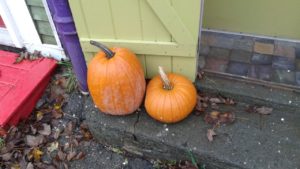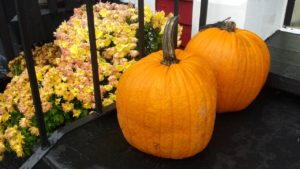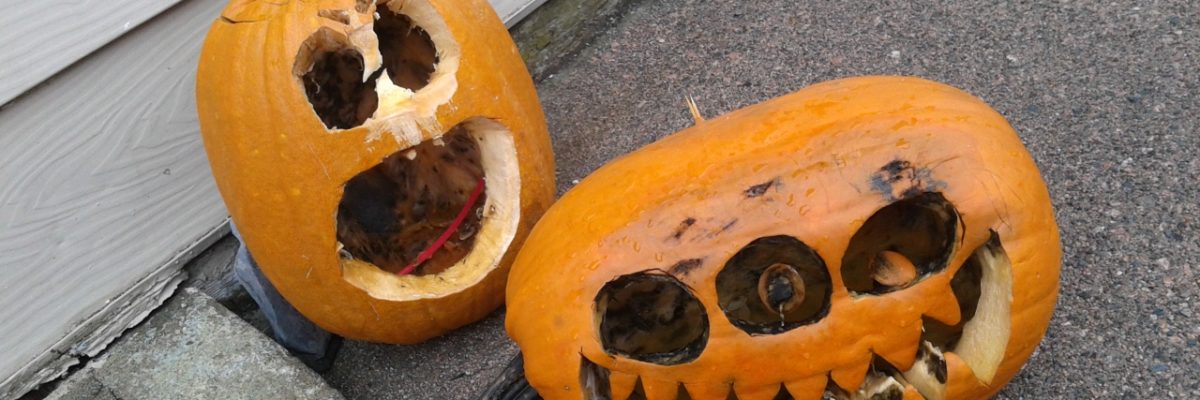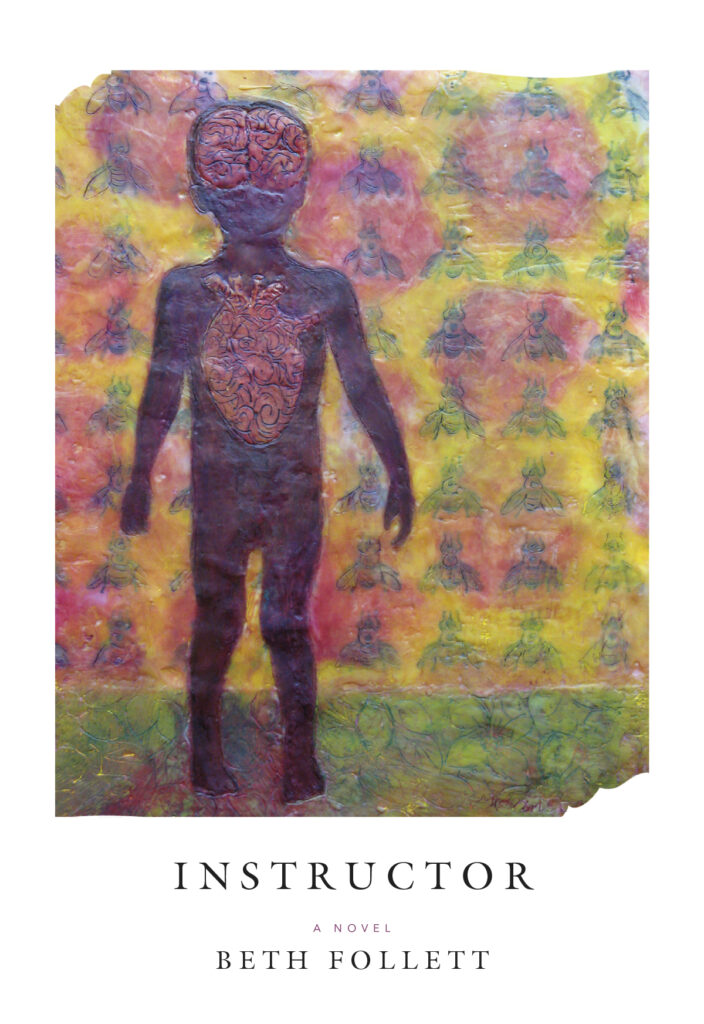Are You Afraid of the Dark? NLers Share their Spooky Cultural Traditions
October 2018
C’est L’Halloween!
To celebrate, we’ve asked NLers with connections to other countries to share the spooky traditions they grew up with.

Photo by Joan Sullivan
In Poland the first of November is All Saint’s Day – for 50 years the Communist Government called it the Day of the Dead, to rebrand it away from religion, just as Catholicism rebranded it from the pagans. Everybody goes to the cemetery carrying colourful lamps, it’s like a fire, thousands of them at every cemetery. They also bring chrysanthemums; it’s a great spectacle. You don’t place lamps just at your family’s graves but spread out all over the cemetery. It begins after midnight and the lamps burn for four or five days. In more rural areas they bake bread with a cross in the loaf and share that. The whole idea behind the lamps is that when people die they go to Purgatory, and these lamps can help guide souls to heaven. People don’t do this because they are afraid of death but to connect with the dead. It’s a reflective mood, to keep the memories. It looks amazing and it feels like everything is on fire.
Piotr Krajewski

Photo by Joan Sullivan
I grew up in California. When we lived in Southern California my mom was still a hippy. Since we didn’t eat sugar we didn’t go trick-or-treating. Instead, my sister, my cousins, and a neighbouring hippy family would put on an incredibly elaborate skit-show every Halloween. It involved weeks of writing/set design and many costume changes. I was the youngest.

Photo by Joan Sullivan
A few years later we were living in Northern California and my mom wasn’t so strict about sugar anymore, but I still didn’t trick-or-treat until at least Grade Four. Instead, she would buy a huge mass of peppermint patties and bags of honey roasted peanuts (our favourites) knowing that no one ever came to our street. My mom’s friends would come over and we would stay up and watch old horror movies. We ate patties and peanuts for days.
Emily Deming
We absolutely do celebrate Halloween in Germany, but it only really started in the mid-1990s. Basically it is a rip-off of the North American standard Halloween ghosts and pumpkins, although we don’t do trick-or-treating. It’s about dressing up and going to the parties. Because beginning around the 6th or 9th of November is the Karneval which lasts until February. This is about costumes, and exercising the demons. People wear wooden masks with horns, fur coats, wierd straw contraptions. It’s primal. It’s all entangled with the Halloween stuff because it happens around the same time and is an excuse to extend the Karneval a week earlier. It’s the same generic debauchery. There’s a huge scene where people take pride in fashioning their own costumes. Cities have Karneval supply shops and you can work on your costume 365 days a year.
Joechen Koerner

Photo by Joan Sullivan
My mother grew up in Sunnyside, NL where they weren’t allowed to carve the squash because they were too valuable. So they carved faces into turnips – but they had to be careful to save what they scooped out of them, because they would eat that later. And they would put a light or a candle inside. They wouldn’t dress up, that was for jannying at Christmas. But the children would get together and have “a little bit of fun.”
Paula Eddy-Shea
Australia is very multi-cultural. One person in three was born outside the country – that might be one in four. A lot of the ethnic groups cluster in certain areas. There’s not real history of Halloween, but it’s growing somewhat over the past five or ten years. It’s very localized. The area where I come from, Stanthorpe, is fruit-growing, and there are a lot of Italians, 15 per cent of the population speak Italian at home. On All Soul’s Day, the last day of October, the Italians are Catholic and they have a special mass, and they have a procession to the cemetery which is about 2km away, walking slowly, dressed in black, with candles.
Mike Hefferan, (Visiting St. John’s)

Photo by Joan Sullivan
In India, a Bhoot is a supernatural entity – usually the equivalent of a ghost. These are souls who are displeased and come back to fulfill their purpose. A soul cannot be destroyed. Hence, Hindu exorcists perform Tithis to get rid of the soul, asking it to calm down and trying to find the reason for its sorrow/pain.
Pishachis are flesh-eating monsters/demons. They traditionally haunt cremation grounds along with Bhoots. They are shape-shifters at will and can also become invisible. They have the power to possess a body and mind affecting the victim with a variety of maladies. Hindu exorcists use mantras to rid the possessed body of Pishachis. Hindu exorcists, referred to as Tantrics, use mantras and yajnas (sacrificial fires) to control Bhoots and Pischachis.
Now, every year when the soul sheds its mortal self (aka dying!) we hold a death ceremony where the spirits of not just the departed soul but also the souls of our ancestors come to us to bless us. The day is called Tithi. We partake in a special meal that has a few favourites of the departed soul. Family gets together to offer prayers to appease the soul and ask for its blessings. It is a customized day of the dead. I have attended my grandfathers’ ceremonies and have always felt a hand of blessing on my head, thanks to this tradition. It’s finding beauty in the most macabre moments of life.
Apart from this, another story that comes to mind is the killing of Mahishasura. An asura, though not traditionally evil, is now synonymously used for a demon. Mahishasura was a buffalo-demon and a devout follower of Lord Brahma, the creator of this universe. He arduously prayed to him. Brahma, finally pleased with his devotion, said he would grant him a boon. Greed coursing through his veins, Mahishasura demanded that he be invincible – no man or animal could ever kill him. With this boon, he became unassailable. Pompous and evil, he wanted to conquer all three worlds – Hell, Earth and Heaven – and constantly waged a war wreaking havoc. Then, she arrived. Riding on her lion/tiger, a trident in one hand and blazing eyes, Chamundi (or Durga or Kali) took down this monstrous man after a fierce battle. Every eighth day of Dasara is celebrated in her honour. She is thanked and venerated for all she did. The image typical of Chamundi/Durga/Kali is quite scary and hence, this story popped up in my head. However, this isn’t perceived as a spooky or macabre story.
Prajwala Dixit




